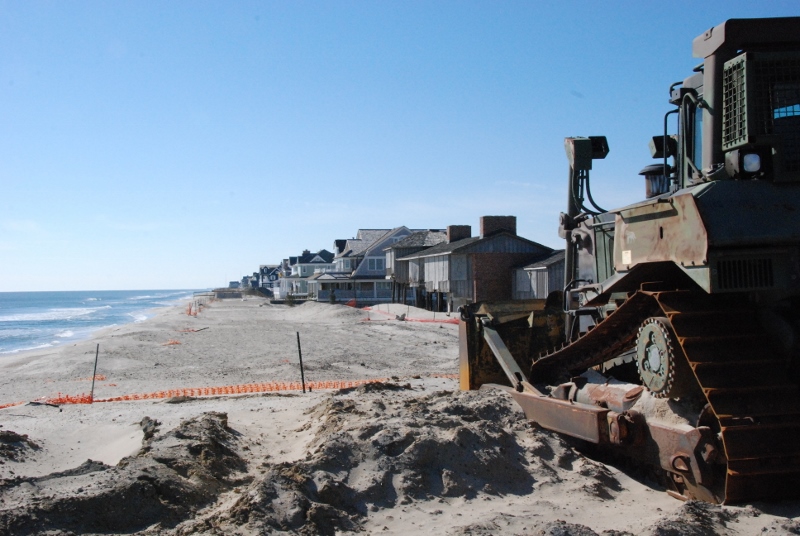With the start of another taxpayer-funded, $128 million Army Corps of Engineers beach-building project just weeks away, one last group of New Jersey's seaside homeowners were in court last week, essentially saying: "No thanks."
Bay Head, N.J., is a Victorian-era oceanfront enclave of stately homes, perched behind a stone revetment to protect them from storm waves. Recently extended to 1.8 miles after Hurricane Sandy, the sea wall is the largest privately maintained protection structure on the Jersey Shore.
The owners want to keep it that way, and are fighting the Corps and Gov. Chris Christie’s administration over the next 14-mile segment in a strategy to protect the coast from another disaster — by widening the beach and building an engineered dune up to 22’ above mean low water.
The owners say the state's demand that they grant the Corps perpetual property easements for construction and maintenance means they will lose the ability to maintain their own rock wall and sand — defenses their families have managed for decades — with no guarantees that Congress will fully fund the estimated $514 million cost of construction and replenishment cycles over the next 50 years.
Weeks Marine, Inc., Cranford, N.J., has the contract, and the Corps of Engineers Philadelphia District will soon have a pre-construction meeting to kick off the project this spring. The likely starting point: Bay Head’s neighbors in Mantoloking, another exclusive seaside resort that was wrecked by Sandy.
Where the storm blasted three inlets across the Mantoloking barrier beach into Barnegat Bay, expanses of sand still lie where houses disappeared. Under a bluff of sand that is regularly bulldozed and groomed, there is a newly buried steel seawall, four miles long, a last-ditch defense against future breaches. At all other times, there must be sand in front; otherwise wave scour exposes the wall, making the beach inaccessible.
The Bay Head case is being closely watched on the Atlantic Coast, where the Corps has plans in various stages for as many as 40 beach projects through the 2030s, potentially worth $2.1 billion to $2.8 billion in contracts for dredging and workboat companies. The Corps’ partners in the New Jersey Department of Environmental Protection prevailed in earlier court cases against other homeowners and towns, forcing them to accept easements.
Two weeks of testimony before state Superior Court Assignment Judge Marlene Lynch Ford at the Toms River, N.J., courthouse featured Bay Head lawyers challenging the Corps’ upbeat projections of economic benefits from beach replenishment, and dueling coastal scientists.
The judge is expected to issue a ruling in the coming weeks — while Mantoloking and other towns will be glad to get sand courtesy of the taxpayers.
What happens if Bay Head is allowed to sit this one out? The natural longshore drift of sand will just draw beach fill in from its neighbors, said Stewart Farrell, a coastal geologist and director of the Coastal Research Institute at Richard Stockton University, who testified for the state.
“If they do the project in Point Pleasant Beach, and they do it in Mantoloking, and they don’t do it in Bay Head, it will be like a catcher’s mitt,” Farrell said. “They’re getting a beach fill anyway, at the other two communities’ expense.”
That happened when the Corps undertook its first massive Northeast beach replenishment a few miles north in New Jersey’s Monmouth County during the 1990s, when Deal, another high-end residential beach town, stubbornly refused to cooperate.
In the end, after Sandy tore up its beach and undermined houses, Deal came around. On Dec. 12 the Corps of Engineers New York District officially completed the Deal segment – the doughnut hole in a beach replenishment project that started 22 years before.





